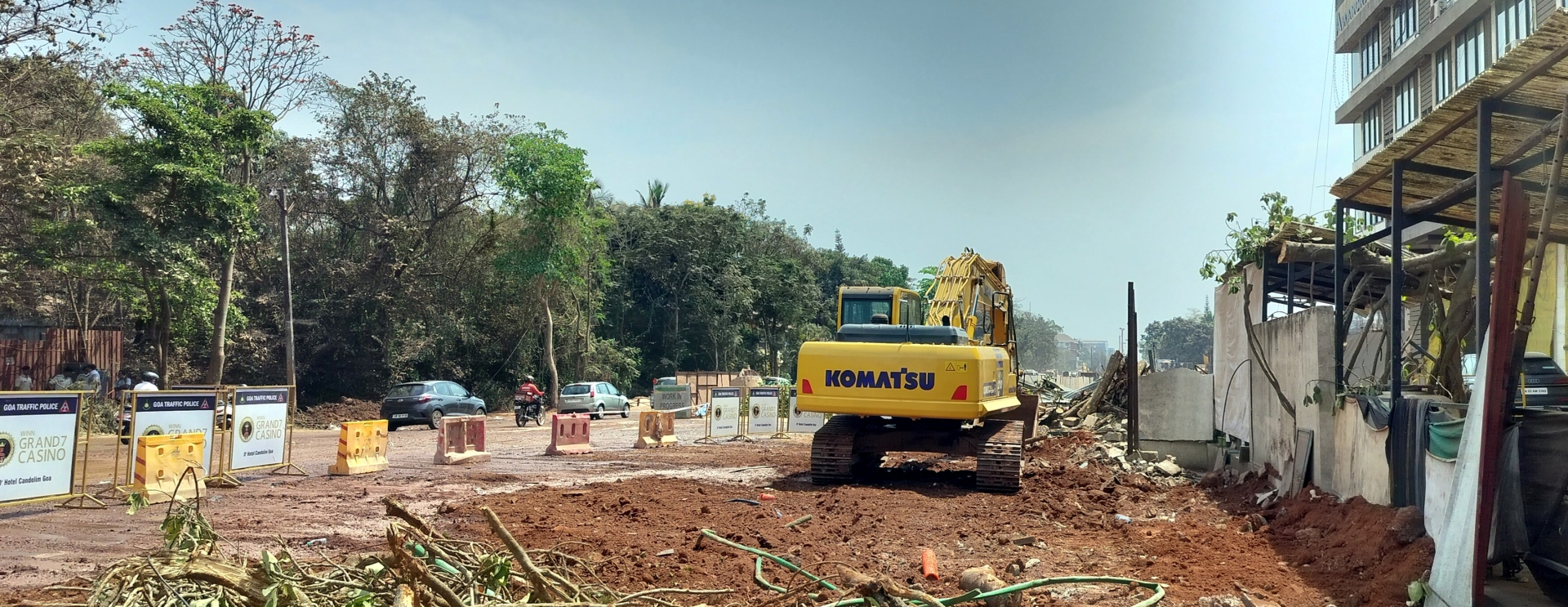Porvorim locals say it is not matter of relocation but a profound loss of their collective identity

ROOTED TODAY, GONE TOMORROW: The site where a massive, centuries-old banyan tree once stood has been cleared to make way for development.
Photo Credits: Agnelo Pereira
MAPUSA
In the quiet darkness of early Monday morning, Porvorim lost more than just a tree. It lost a symbol of heritage, identity and faith.
The ancient banyan tree, a living relic of history, was translocated in a move that residents describe as not just an erasure of the past but a wound to the spirit of their community.
For decades, the grand banyan tree stood as a silent witness to the lives and traditions of the people of Porvorim.
It wasn’t just an ordinary tree – it was sacred, a centre for rituals and a place of deep cultural significance.
Alongside it stood the idol of Dev Shree Kapreshwar, known locally as “rakhondar” or “zagavello,” the protector of the land and its people.
With the tree’s removal, the idol too was taken away – its location now shrouded in secrecy.
Local residents, stunned and heartbroken, say this act is not just a matter of relocation but a profound loss of their collective identity.
“The identity of the people, their culture and heritage has been permanently displaced,” lamented social worker Shankar Phadte.
“This action will have serious repercussions for generations to come,” he added quickly.
Phadte, like many others, believes the government’s approach – carried out under the cover of darkness – reveals a disregard for the people’s sentiments.
“Nobody is against development. But it feels like no one cares about the people or their faith. What matters now is investment, not heritage,” he said.
For Nilesh Chari, a resident of Socorro, the removal of the tree and idol has erased a chapter of history.
“Rituals and prayers have been conducted under that tree for decades. People’s emotions were deeply connected to it. Now, all of that has disappeared within hours,” Chari said.
Dev Shree Kapreshwar was seen as a guardian, fulfilling the wishes of devotees.
“People had faith in him,” Chari said. “The government, however, is forcing its decisions without considering the sentiments of the people,” he added.
Many locals saw this day coming, but it was the manner in which it was executed that has left them disturbed.
“The way they went about it – under the cover of darkness – speaks volumes. This government keeps people in the dark with false promises and then swoops in when no one is watching,” said Mahesh Mhambrey, another social worker.
Mhambrey also criticised the silence of right-wing organisations that claim to protect Hindu culture.
“The ruling BJP calls itself a Hindutva government but is responsible for demolishing Hindu temples. Where are the voices of Bajrang Dal and RSS now? Their Hindutva seems to be whatever the BJP decides it to be,” he said.
For activist Dipesh Naik, the loss is personal.
“‘Vodakadde’ – as the place was known – has lost its identity forever. We fought hard to save the tree and the temple, but we lost. Our rakhondar Kapreshwar protected us for years. I still believe we can build a small shrine in his honour there,” he said.
As the dust settles, Porvorim stands at a crossroads.
What remains is an aching void where the banyan tree once stood and with it, a lingering question – how much of heritage must be sacrificed in the name of progress?